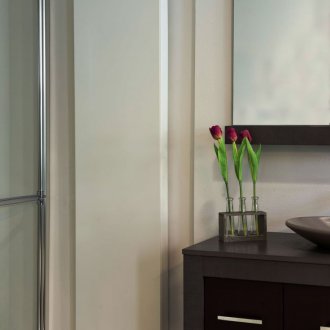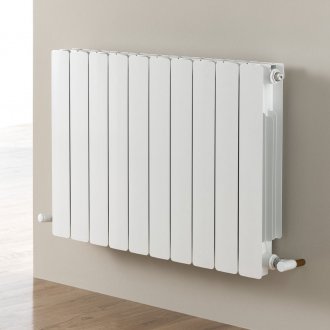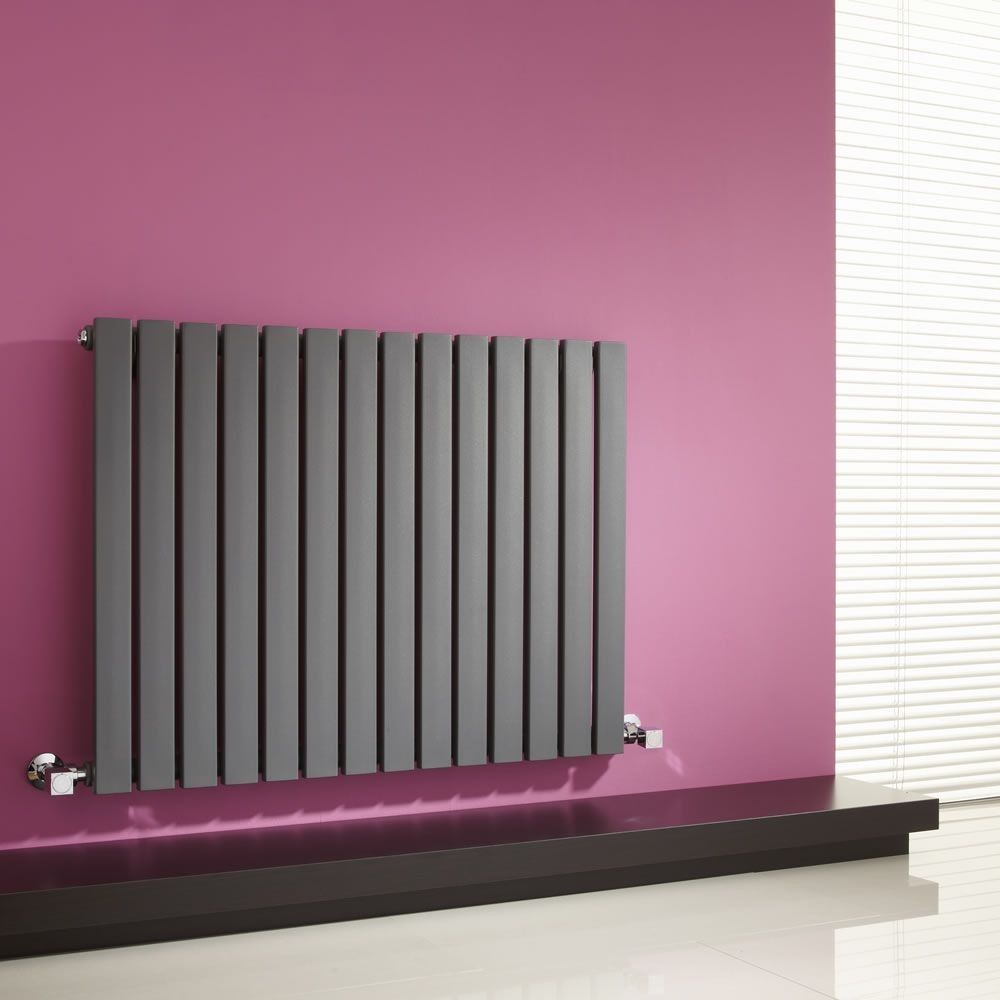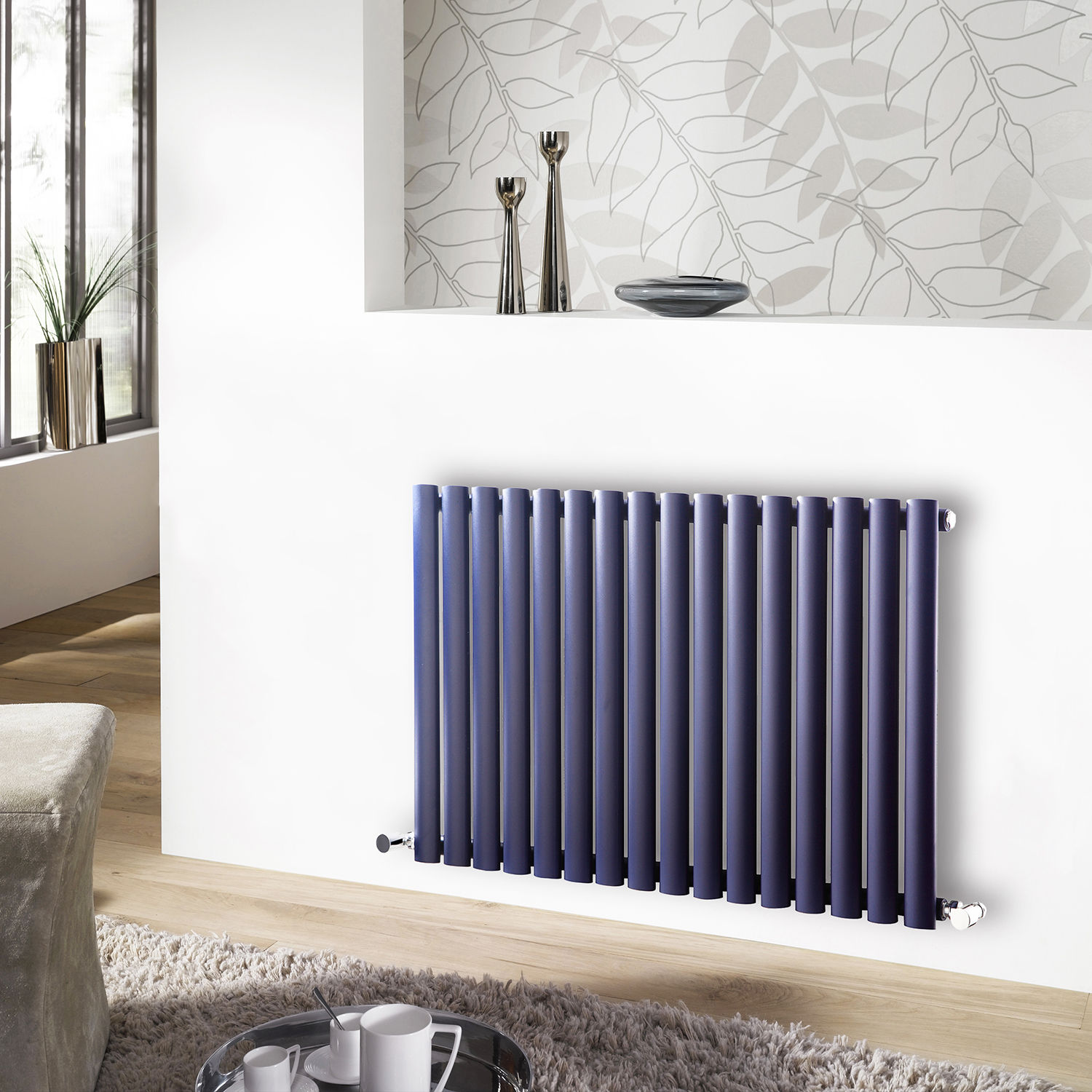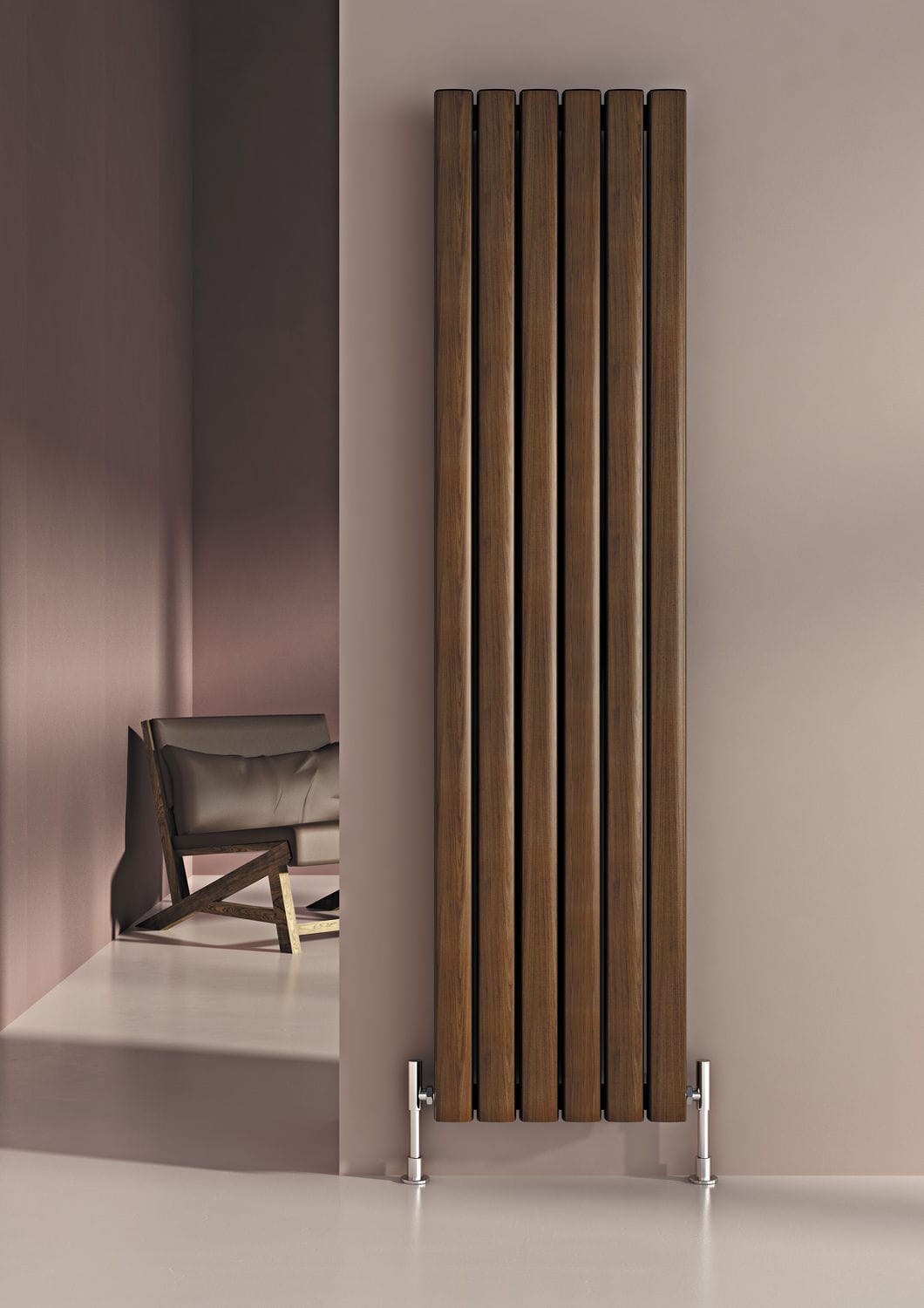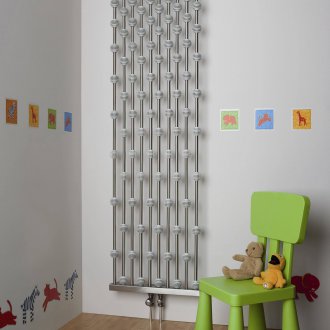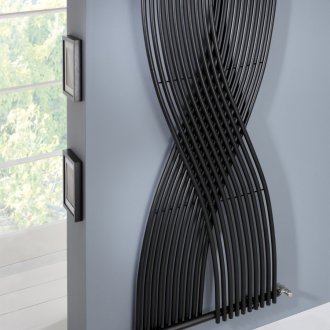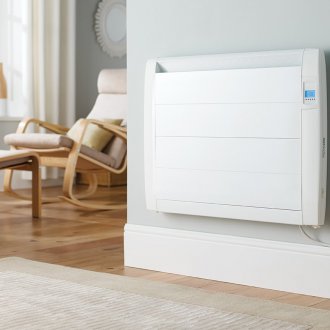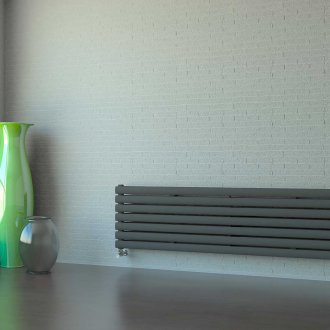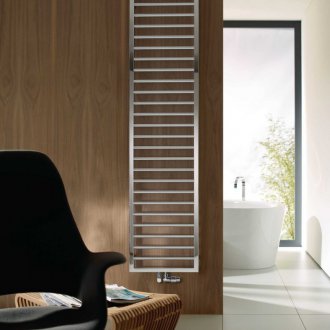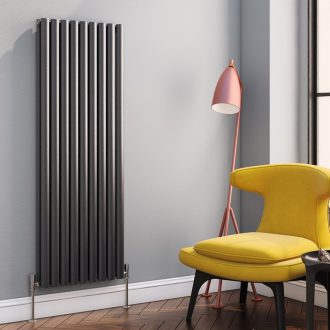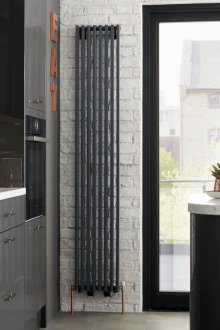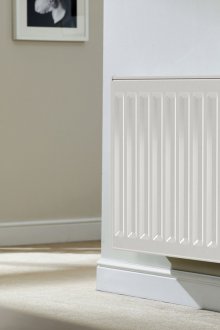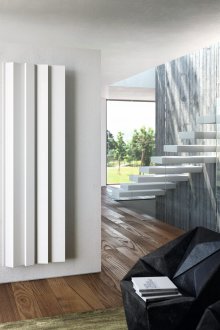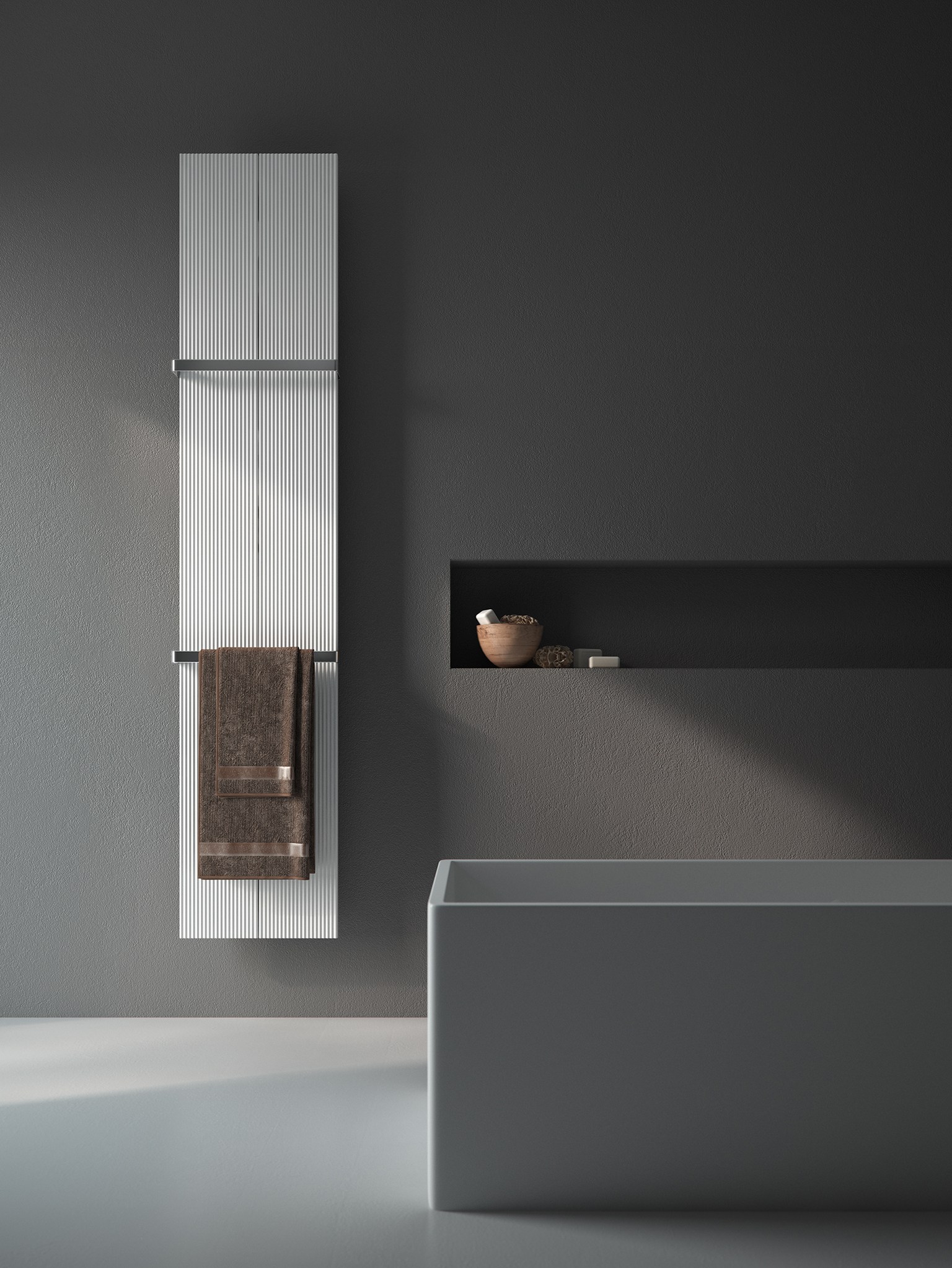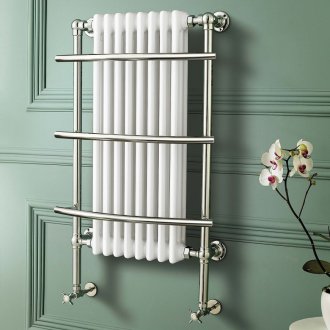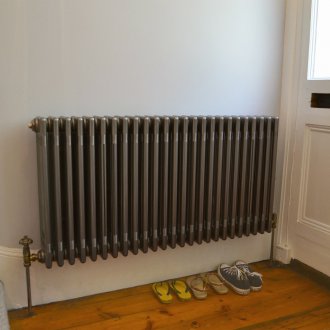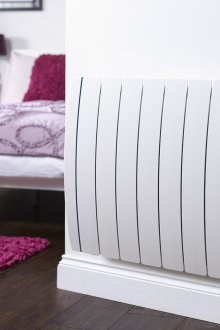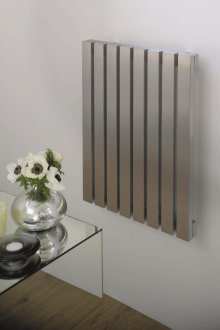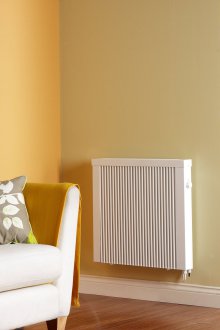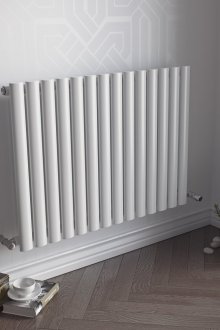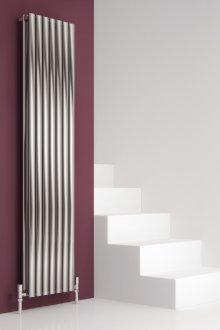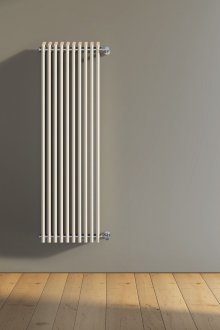A wall-mounted radiator is a reliable option for a heating device and a non-standard interior element (23 photos)
Content
Modern wall radiators not only create a comfortable and warm atmosphere in the room. Manufacturers offer various wall models, which can become the main focus of the interior. It is important to note that an interesting view does not reduce the useful properties of heating appliances. Today it is not difficult to choose a product that has the desired performance characteristics.
Radiators can work from a network or connect to a centralized heating system (panel, sectional).
Electric wall heating radiators
Electric heaters cannot be called a novelty, but thanks to modern technology, such compact models have appeared that they can be mounted on the wall. Such placement allows you to save space, and the risks of accidental tipping of the device or accidentally touching a hot surface are eliminated.
The main types of electric wall heaters include oil, convection, ceramic and infrared devices. The main advantage of these heaters is the possibility of arranging autonomous heating and connecting it to the "smart home" system.
Wall mounted oil heating radiators
The design consists of a metal sealed enclosure, a tubular electric heater. The power consumption is from 0.5 to 1.2 kW / h.
The device operates very simply: the metal heats up and heats the oil. Radiation gradually heats the air and heat spreads throughout the room. Since the heater body is not very hot, the air dryness does not exceed the indicators inherent in rooms with water heating.
Advantages of the oil cooler:
- long service life and silent operation;
- It is possible to adjust the power of the device. Thanks to the built-in sensors, the heaters turn off when the set temperature is reached;
- the use of mineral oil protects the heater from corrosion;
- since the oil cools longer than water, the temperature of the radiator after a shutdown decreases gradually and air heating continues, which contributes to energy saving;
- the heater can be removed from the wall and transferred to other rooms if necessary;
- wide range with different technical characteristics;
- easy care - just wipe the body of the wall radiator (always unplugged) with a damp cloth;
- affordable price.
Disadvantages:
- significant weight, which may cause difficulty when mounting on some walls / partitions;
- when the heater is turned on, it takes some time to warm up the oil.
Some models are equipped with built-in fans, which allows you to warm up the room faster and more evenly.
When using the heater, some safety rules must be observed: the appliance cannot be hung with things, it is not recommended to install it in the bathroom or in a room with high humidity (baths, saunas). A variety of models (from 4 to 12 sections) allows you to choose a radiator for heating a room of the desired area (from 10 sq.m).
Convector
The appliance consists of a heating element and a housing in which there are special openings for the movement of air currents. Power consumption - from 1 to 1.5 kW / h.
The principle of operation is simple and based on natural air circulation: through the lower / side gratings, cold masses fall on the heating elements, and already hot flows exit through the upper louvers installed on the front panel of the heater. Since the case of the device does not heat up, the efficiency of the device is about 99%.
Benefits:
- durable and silent;
- the presence of several temperature controllers;
- easy care;
- safety at work - the case does not overheat, which eliminates the possibility of burns on contact;
- convenient installation (even on drywall walls);
- acceptable prices.
Disadvantages:
- significant energy consumption, which is especially significant in the winter;
- devices with fans may make noise during heating or during cooling;
- not provided for the replacement of heating elements when they burn out.
When choosing a vertical heater, it must be borne in mind that the case size may not correspond to the power of the device. For rooms with standard ceilings, 1 kW of power per 10 sq.m. is required.
Some models have additional features:
- a timer that allows you to control the time of work;
- remote control, which is very convenient for regulating the heating process;
- a humidifier that creates the desired humidity in the room and a comfortable atmosphere;
- the presence of a built-in fan that increases the efficiency of the device and increases the speed of heating the room.
Modern vertical models are equipped with waterproof enclosures, which allows the heater to be installed in rooms with high humidity (bathrooms, showers).
The front side of the device can be not only metal. Today, customers are offered models with a glass-ceramic, granite front panel. The surface can be decorated with an ornament or pattern.
Vertical instruments are available in standard sizes or special parameters. The largest model can have a height of 65 cm, and the smallest - 33 cm. Horizontal convectors for water heating also look interesting (there are floor and built-in).
Traditional Cast Iron Heating Radiators
Modern manufacturers offer a wide selection of products that can vary in size, appearance, color design.
The design of the battery is a combination of sections that are cast separately. You can choose a radiator, which has from 3 to 12 elements. The number of sections is determined by several factors: the size of the room, the number of windows and the area of window openings, the location of the apartment (angular or not). The weight of one section can be approximately 7 kg.
When wall mounting the batteries, the nature of the walls must be taken into account, since not every coating can withstand the solid weight of the radiator. Installation of the product is carried out using reliable fasteners. When installing, it is necessary to maintain a distance between the wall and the radiator of at least 2 cm and a height from the floor covering of at least 10 cm.
Advantages of wall mounted water batteries:
- duration of operation. Technical specifications allow 50-55 years, although in practice this period sometimes lasts longer;
- strength. The material is able to withstand pressure of about 18 atmospheres;
- energy saving - heat preservation for a long time (which is especially important when the system suddenly shuts down);
- uniform heating of the room;
- resistance to corrosion;
- easy care;
- a large selection of manufacturers.
The disadvantages include:
- the solid weight of the products, which can cause difficulties in transportation and installation;
- modest appearance;
- the presence of areas that are difficult to clean / paint;
- temperature conditions cannot be regulated;
- it takes time to warm up the room.
Before purchasing cast-iron radiators, it is desirable to clarify the power of one section of the product. This will help you choose the right battery model with the right number of sections. It is believed that for a room with one window and one external wall, a power of 1 kW is sufficient for every 10 square meters. For a room with a window and two external walls, a power of 1.2 kW per 10 sq. M is already required. And for heating a room with two windows and two external walls, 1.3 kW of power per 10 sq.m.
When installing a protective screen, heat loss occurs (approximately 5-10%), which depends on the type of screen, battery power.
Modern heating systems are increasingly becoming elements of the design of the room. Retro-cast iron batteries can become a real decoration of the interior, and stylish vertical cast-iron batteries no longer need to be hidden behind curtains or decorative screens.
The heating equipment market is growing rapidly. The aesthetic component of heating radiators is paying more attention, and the new functionality of electric heaters (including energy-saving ones) make it easy to create a comfortable atmosphere in the apartment.
